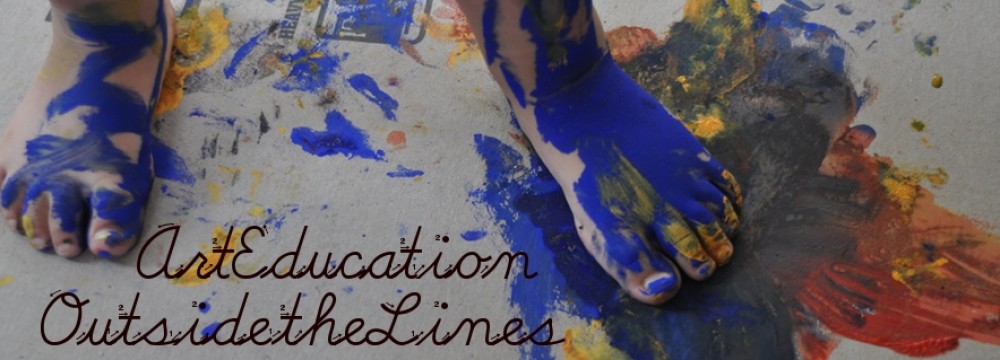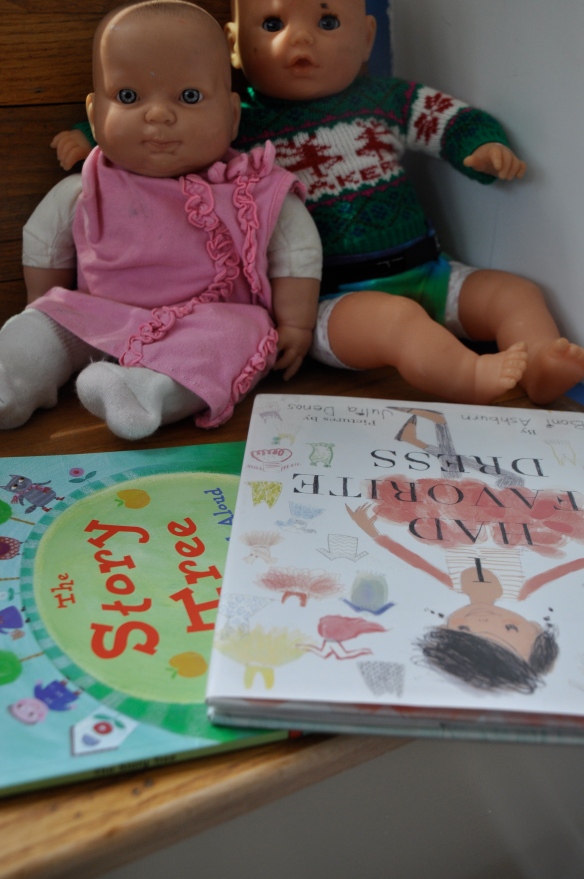As I wrote this time last year, Halloween is a serious affair at Rosa’s elementary school. This is her final year there and she wants to go out with a bang. It’s amazing to see how far her thinking on the subject of creative costuming has become. This year’s idea was pretty meta.
For the past two years, Rosa and Cora have worn related costumes. Three years ago, Rosa wanted to be something BIG, so she and her mom cooked up a giant jack-o-lantern for her to wear. Since I hadn’t had any brilliant ideas yet, and the costume looked nice and warm, I used some of the extra orange felt from Rosa’s costume and a piece of foam I had lying around to make something similar for Cora. In homage to Rosa’s obsession with mustaches, I gave Cora’s gourd a furry upper lip.

Last year, I was inspired by this tutorial for the most gorgeous DIY wings I’ve ever seen. Again, looking at fabric hanging around in my stash, I decided to make two sets of wings, one for me and one for Cora. I also made some masks and we were transformed into owls. I attached the wings to sweatshirts to make them easy to get on and off and to keep us warm (notice the trend here?). A week before Halloween, Rosa hadn’t decided what to be. She tried on my wings and begged to wear them. How could I say no? I was honored they would be part of her school’s annual costume parade.
 Rosa wanted to continue the tradition of dressing up with Cora. Like most little girls I know, Cora has an interest in dressing up like a princess. Fortunately, this hasn’t developed into a full-blown obsession. I don’t think I could handle that. (See: Cinderella Ate My Daughter by Peggy Orenstein) Watching her sister play dress-up with her friends transported Rosa back in time. She and her girlfriends mastered the art when they were in preschool and kindergarten. They couldn’t last 5 minutes together without disrobing and cloaking themselves in new identities. My favorite was when they would just trade for one anothers’ street clothes. This year, Rosa declared, she and Cora would be princesses for Halloween. “It would be so funny because noone dresses up like a princess in 6th grade.”
Rosa wanted to continue the tradition of dressing up with Cora. Like most little girls I know, Cora has an interest in dressing up like a princess. Fortunately, this hasn’t developed into a full-blown obsession. I don’t think I could handle that. (See: Cinderella Ate My Daughter by Peggy Orenstein) Watching her sister play dress-up with her friends transported Rosa back in time. She and her girlfriends mastered the art when they were in preschool and kindergarten. They couldn’t last 5 minutes together without disrobing and cloaking themselves in new identities. My favorite was when they would just trade for one anothers’ street clothes. This year, Rosa declared, she and Cora would be princesses for Halloween. “It would be so funny because noone dresses up like a princess in 6th grade.”
So, we headed to the thrift store, where she found and fell in love with a gorgeous Betsey Johnson dress with the tags still on. Price = $89.95. Rosa was floored. “How could they charge so much? It’s the thrift store!” So, we talked about non-profit organizations and their need to make money and the fact that while this seemed expensive for Volunteers of America, really the dress was a bargain. If she were 5 years older and headed to the prom, I would have snatched that thing up in a heartbeat. But, it was Halloween, so I suggested we examine the dress, think about what made her like it so much and a) look for something similar but less expensive, or b) try to recreate it ourselves.
Of course this didn’t go over well because what Rosa wanted to hear at that moment was that she could have the dress. And if I were made of money, I would have said yes. Like I said it was a beautiful dress the purchase of which would surely have won me some stepmom of the year award. But I’m not made of money and I recognized this as a teaching moment.
I reminded her of the fashion camp she attended this summer and asked, “What would Jen Gillette do?” Jen was Rosa’s instructor for Fashion Blasters – a tall blonde who greeted the kids on the first day with her hair teased out and up like a runway model, wearing an outfit she’d made of found materials held up by super high platform shoes she’d bedazzled from top to bottom. She’s gone to study theater design and production at Tulane, but her spirit lives on in Columbus through the folks she inspired during her time as a Creative Consultant at the Columbus Museum of Art’s Center for Creativity. Including me.
We put our heads down and went back to the racks. I found a hot pink cotton tube dress the top of which was a lot like the Betsey Johnson design. Rosa found some curtains that were made of a similar material as its skirt. At home we talked about how to put them together. I’ve always been hesitant to sew clothes – I’m not precise enough to make things fit – so I was proud of myself for figuring out the sewing aspect. But I was sad that Rosa didn’t feel confident enough to help me. I powered through on my own. And then I realized, While Rosa wasn’t doing the sewing, this experience gave her an opportunity to spiral back to creative thinking and problem solving skills she learned this summer. And, as I reminded her to do so, I was practicing those skills too – setting a challenge and figuring out a way to address it.
Are your Halloween preparations presenting any creative challenges to you and your kids? I’d love to hear about them. You’ll see ours in a week. Sorry, no peaking.
 Some folks limit their icing color palette for the holidays. We don’t get that.
Some folks limit their icing color palette for the holidays. We don’t get that. Cora’s cookie for Leigh, our music teacher. (Sorry Leigh, I think she ate it.)
Cora’s cookie for Leigh, our music teacher. (Sorry Leigh, I think she ate it.)



























